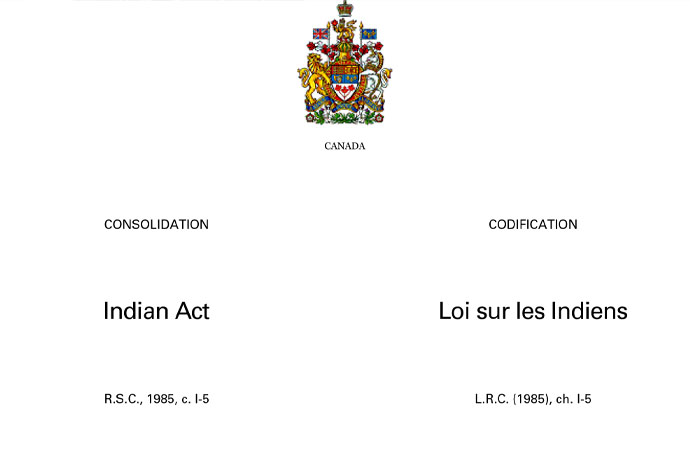Canada’s Indian Act is a piece of federal legislation, passed in 1876, that governs issues related to Indian status, First Nations governments and reserves.
At the time it was passed, the act incorporated colonial laws, which aimed to control the daily lives of First Nations people and assimilate them into settler society.
The Indian Act has been considered problematic throughout the years, and continues to be controversial today, despite being amended many times. The legislation has perpetuated discrimination, poverty and violence, which continues to impact Indigenous communities.
Here’s what you need to know.
Previous Acts
The Gradual Civilization Act, of 1857, and the Gradual Enfranchisement Act, of 1869, were two pieces of notable legislation that were integrated into the Indian Act.
The Gradual Civilization Act promoted enfranchisement as a way to assimilate Indigenous people into society. Enfranchisement meant that a person would voluntarily give up their Indian status in exchange for Canadian citizenship and the benefits that came along with that, such as the ability to vote.
However, because only one person volunteered as a result of the Gradual Civilization Act, the Gradual Enfranchisement Act was subsequently created, which provided the Superintendent General of Indian Affairs with increased power to decide Indigenous rights and freedoms based on who he thought had “good moral character.”
The Indian Act
The Indian Act gave the federal Department of Indian Affairs and its Indian agents (government officials who implemented the policies) increased powers to control band issues and make a number of decisions that affected the lives of Indigenous people.
Under the act, the federal government controlled land (including the renaming of land), money and resources — all while promoting assimilation of First Nations people. Further, any Indigenous forms of government that existed before the act were eliminated.
The law also allowed the federal government to decided who would get Indian status and who would not. An Indian was defined at the time as “any male person of Indian blood,” as well as their kids.
The act resulted in discrimination against Indigenous people in a number of other ways throughout the years that followed, including:
• Requiring Indigenous farmers to have a permit to sell various agricultural products, or to purchase clothing or groceries.
• Making residential schools mandatory for status Indians in an attempt to “civilize” them, by removing them from their homes and families and not allowing them to speak their language or practise their traditions.
• Prohibiting First Nations people from leaving reserves without permission.
• Not allowing alcohol or ammunition to be sold to Indigenous people.
• Preventing Indigenous people from partaking in spiritual ceremonies.
• Requiring Indigenous people to seek permission prior to wearing cultural clothing in public.
• Prohibiting dancing.
• Preventing Indigenous people from seeking legal counsel with regards to land claims.
Amendments
Two notable amendments to the act came in 1951 and 1985.
In 1951, after Indigenous people insisted on being included in the consultation process to reform the Indian Act, some changes were made, which included an end to the bans on ceremonies and land claims. Women were also allowed to vote in band council elections.
But the amendment was not all positive.
It also gave authority to provinces to look after Indigenous child welfare. Down the line, this resulted in child welfare organizations using their power to force Indigenous children from their homes and place them in foster care in another attempt to assimilate them. This period became known as the Sixties Scoop.
In 1985, Bill C-31 was passed, which further amended the Indian Act, redefining Indian status and resulting in many Indigenous people getting their status back.
This was an important bill for Indigenous women, as prior to these changes, women lost their Indian status if they married a man who did not have status. Men, however, did not lose their status through marriage.
Present day
The question as to whether the Indian Act should be abolished today is a complex one that Indigenous and non-Indigenous people alike have varying opinions on.
On the one hand, the act continues to be controversial and amendments have continued to be made, but on the other hand, it gives Indigenous people a way to hold the government accountable, reminding them of their obligations and legal responsibilities to Indigenous people.
Metroland considers the term Indian offensive and only necessary when used in historical or legal contexts.
The residential schools crisis line is available 24 hours a day for anyone experiencing pain or distress as a result of a residential school experience. Support is available at 1-866-925-4419.
This explainer has been informed by The Native Women’s Association of Canada, The Canadian Encyclopedia, Indigenous Corporate Training Inc., University of British Columbia and Government of Canada resources.
Mon., June 28, 2021
To view a copy of the Indian Act in it’s entirety, please click here: Indian Act






